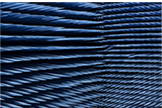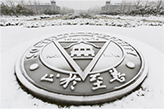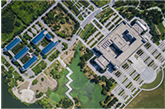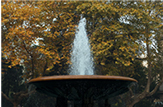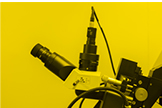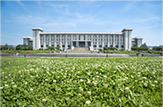On April 10, Professor Han Junhai and his group published their latest research result, Neurexin Restricts Axonal Branching in Columns by Promoting Ephrin Clustering, as cover paper in the world-renowned developmental biology magazine Developmental Cell. Through study on drosophila’s visual system, this research illuminates new functions of the autism related gene, Neurexin, in axonal projection. The study is a collaboration of Liu Lina and Tian Yao.
Columnar restriction of neurites is critical for forming nonoverlapping receptive fields and preserving spatial sensory information from the periphery in both vertebrate and invertebrate nervous systems, but the underlying molecular mechanisms remain largely unknown. The paper demonstrates that Drosophilahomolog of α-neurexin (DNrx) plays an essential role in columnar restriction during L4 axon branching. Depletion of DNrx from L4 neurons resulted in misprojection of L4 axonal branches into neighboring columns due to impaired ephrin clustering. The proper ephrin clustering requires its interaction with the intracellular region of DNrx. Furthermore, the research finds that Drosophilaneuroligin 4 (DNlg4) in Tm2 neurons binds to DNrx and initiates DNrx clustering in L4 neurons, which subsequently induces ephrin clustering. The study demonstrates that DNrx promotes ephrin clustering and reveals that ephrin/Eph signaling from adjacent L4 neurons restricts axonal branches of L4 neurons in columns.
OriginalArticle:
http://www.cell.com/developmental-cell/fulltext/S1534-5807(17)30125-9







